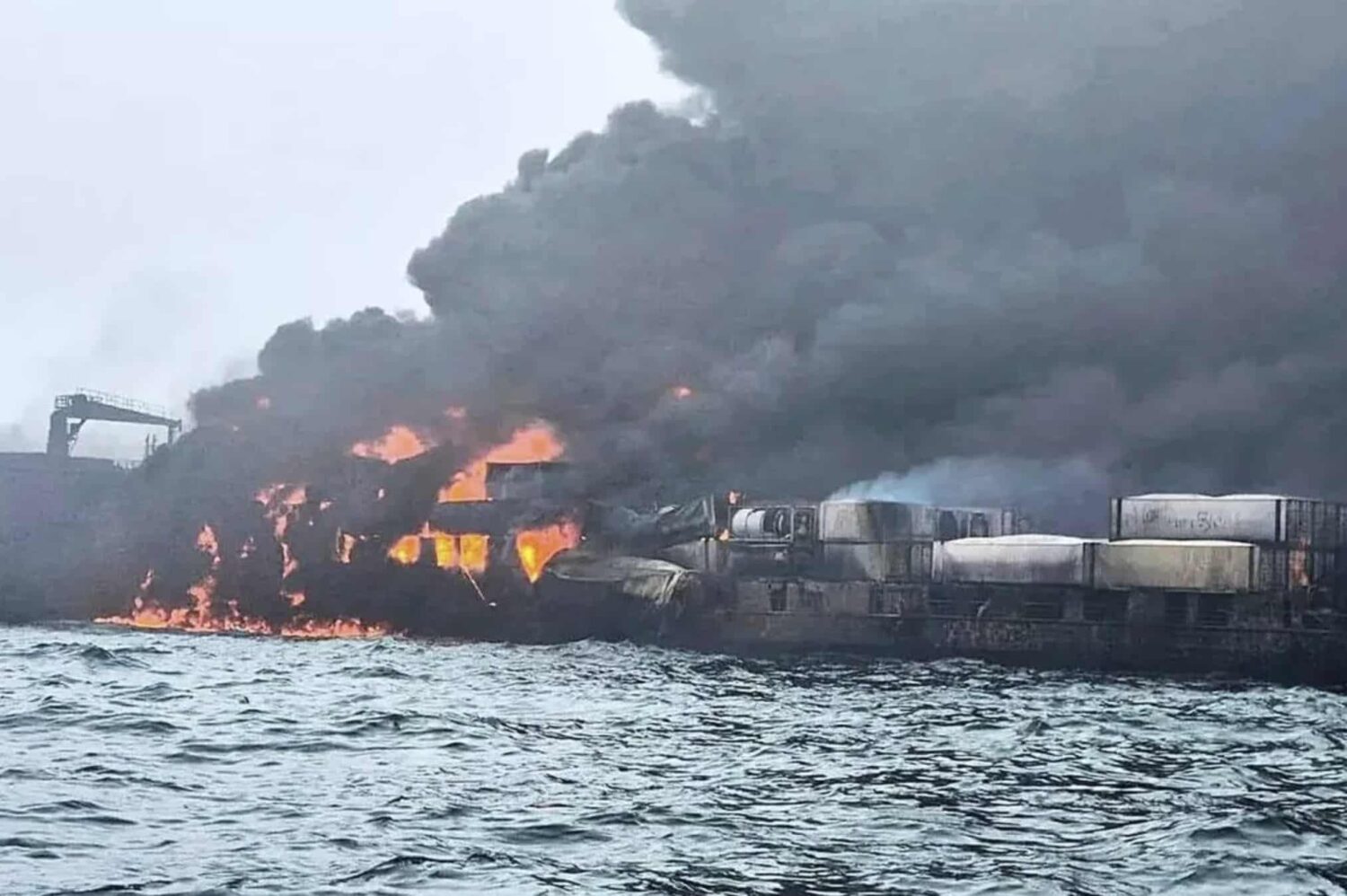Both vessels create “massive fireball”
A major rescue operation got underway off the east coast of England this morning after a Portuguese flagged cargo vessel collided in the north sea, near Hull, with an oil tanker sailing under an American flag.
According to local reports, both vessels caught fire, with thick smoke billowing out over the water and many separate explosions.
A number of people abandoned the ships following the collision.
According to the BBC, the US-flagged tanker Stena Immaculate appears to have been hit while at anchor, shortly before 10am this morning, by the Portuguese-flagged Solong (actually registered in Madeira).
According to Portuguese reports, the Solong was on its way from Grangemouth, in Scotland, to Rotterdam, in the Netherlands.
The Stena Immaculate had sailed from the Greek port of Agioi Theodoroi, and was carrying 18,000 tons of jet fuel.
The British coastguard has reported that multiple rescue craft and vessels were involved in the rescue, including a coastguard helicopter and fixed wing aircraft, lifeboats from Skegness, Bridlington, Maplethorpe and Cleethorpes, and various vessels that were in the vicinity at the time.
Mid-afternoon there were few details on any casualties. Online instruments like Marine Traffic, however, were enabling a reconstruction of what happened before the incident.
BBC reports suggest over 30 people have been brought ashore already. Only one has required hospital treatment.
Reporter Jonathan Josephs describes the Stena Immaculate as being managed by US logistics firm Crowley, and owned by Sweden’s Stena Sphere, controlled by the billionaire Olsson family.
“This type of complex arrangement is quite typical in the global shipping industry,” he adds.
The Stena Immaculate is “one of just 10 oil tankers enlisted in a US government programme which is designed to supply the armed forces with fuel during times of armed conflict or national emergency.
It means they can be called upon by the US military at short notice, but there’s no indication that it was being used for these purposes when this accident happened”.
What is unclear, however, is that with all the modern instruments and technology available, how is it that a cargo ship managed to collide so catastrophically with a fuel tanker.
Late reports today suggest the Solong was carrying 15 containers of sodium cyanide. Like the Stena Immaculate it was sailing under a flag that does not correspond to the nationality of its owning company, which is based in Hamburg, Germany.
Concerns now are obviously with the environment consequences of this incident, albeit jet fuel is said to pose less in the way of risks than crude oil. Sodium cyanide, for instance, is very soluble in water and can be toxic because it interferes with the respiration of animals. According to Dr Mark Hartl, associate professor of marine biology at Herriot Watt University, who spoke with the BBC, if sodium cyanide is heated up it can generate a toxic gas. At this point it is not clear if any has entered the water or been burnt, but it has the potential to kill aquatic organisms through ingestion.
As this investigation progresses it has transpired that one crew member of the Solong remains unaccounted for. An extensive search has concluded without success. Now it is a question of damage control, which reports have explained will be the responsibility of the countries under which the vessels were sailing (ie Portugal and America). This is already being described by British media as the ‘largest environmental disaster for a decade’.


























